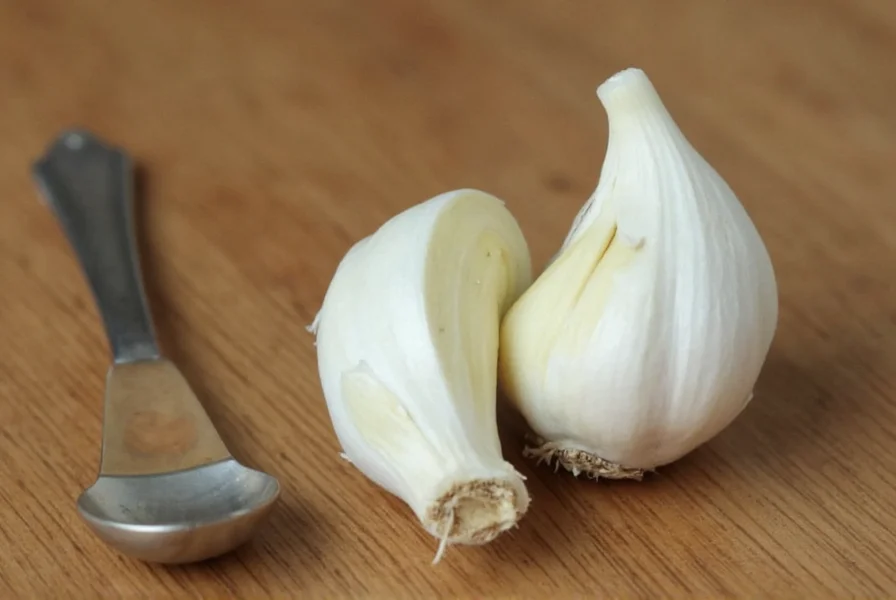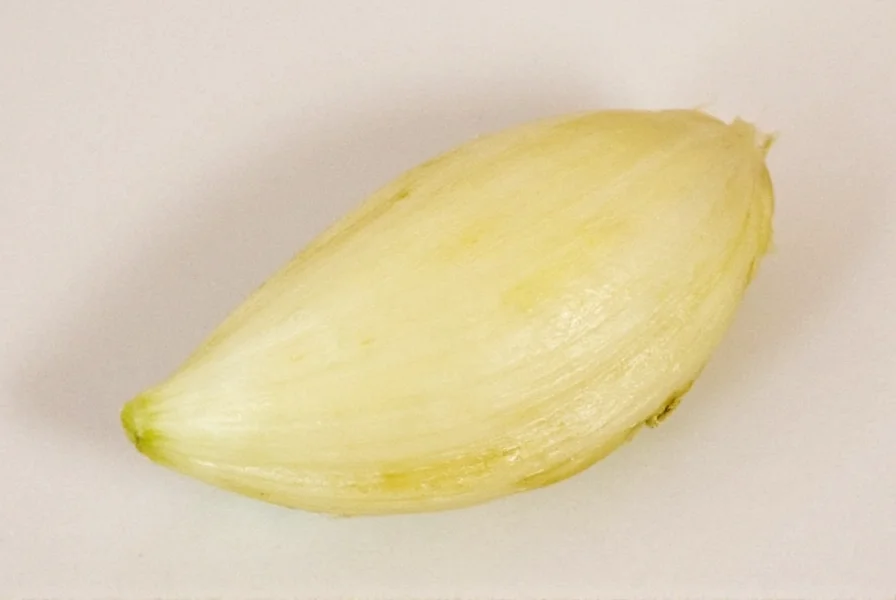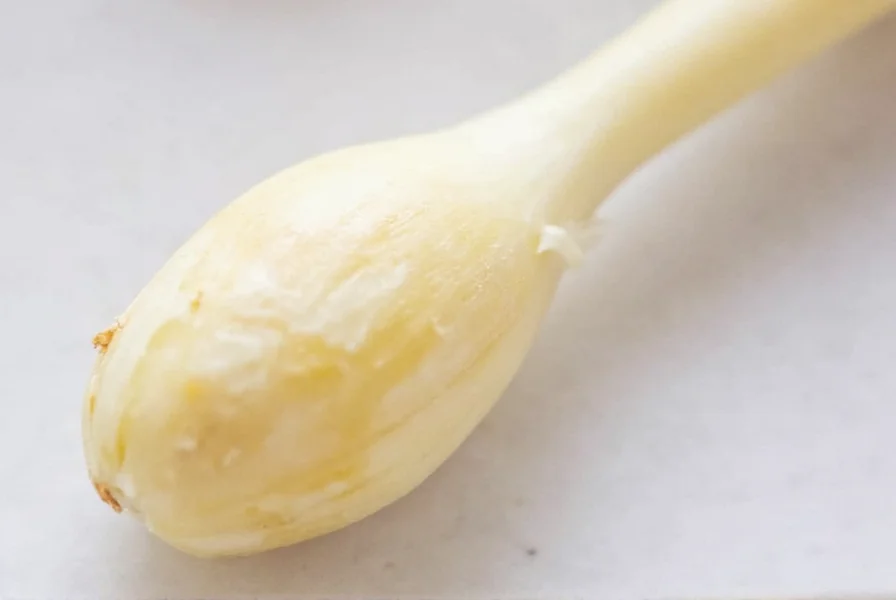One medium-sized garlic clove equals approximately 1/2 teaspoon of minced garlic. This precise conversion is essential for recipe accuracy, as garlic measurements directly impact flavor balance in dishes. Understanding this basic kitchen conversion ensures your cooking achieves the intended taste profile without overpowering or under-seasoning.
When following recipes that specify minced garlic but you only have whole cloves, knowing the exact conversion prevents culinary mishaps. Garlic’s potent flavor means even small measurement differences can dramatically alter your dish. This guide provides accurate conversions, practical tips, and essential context for using garlic effectively in your cooking.
Understanding Garlic Measurements
Garlic measurements aren't always straightforward because cloves vary in size. A standard medium garlic clove, commonly found in grocery stores, yields about 1/2 teaspoon of finely minced garlic. However, this can fluctuate based on several factors:
- Small cloves (about 1/2" long): Yield approximately 1/4 teaspoon minced
- Medium cloves (about 3/4" long): Yield approximately 1/2 teaspoon minced
- Large cloves (1" or longer): Yield approximately 1 teaspoon minced
These measurements assume you're using freshly minced garlic, not pre-minced jarred varieties which often contain preservatives that affect both volume and flavor intensity.

Why Garlic Measurement Accuracy Matters
Garlic contains allicin, the compound responsible for its distinctive flavor and aroma. When garlic is cut or crushed, enzymes activate allicin production. The amount you use directly impacts your dish's flavor profile. Too little results in under-seasoned food, while too much creates overpowering, bitter notes that can ruin otherwise well-prepared meals.
Chefs and experienced home cooks emphasize precise garlic measurements because:
- Garlic flavor intensifies during cooking
- Different cuisines require specific garlic-to-ingredient ratios
- Raw versus cooked applications need different quantities
- Garlic quality varies by season and growing conditions
Garlic Conversion Reference Chart
| Whole Garlic Cloves | Minced Garlic (Teaspoons) | Minced Garlic (Tablespoons) |
|---|---|---|
| 1 small clove | 1/4 tsp | N/A |
| 1 medium clove | 1/2 tsp | N/A |
| 1 large clove | 1 tsp | N/A |
| 3 medium cloves | 1 1/2 tsp | 1/2 tbsp |
| 6 medium cloves | 3 tsp | 1 tbsp |
| 12 medium cloves | 6 tsp | 2 tbsp |
Factors Affecting Garlic Measurements
Several variables influence how much minced garlic you get from a single clove:
Clove Size Variations
Garlic bulb size depends on growing conditions, variety, and harvest time. Softneck garlic typically has smaller cloves than hardneck varieties. When recipes don't specify clove size, medium is generally assumed.
Mincing Technique
Your mincing method affects volume:
- Hand-minced: Produces slightly more volume due to uneven cuts
- Food processor: Creates more compact minced garlic (about 10-15% less volume)
- Purchased pre-minced: Often contains oil that increases volume but dilutes flavor
Freshness Factor
Fresher garlic contains more moisture, yielding slightly more volume when minced. Older garlic dries out, reducing the final minced quantity.

Practical Recipe Applications
Understanding how much minced garlic equals one clove becomes crucial when adapting recipes. Consider these real kitchen scenarios:
When Scaling Recipes
If a recipe serves 4 and calls for 4 cloves of garlic, that's approximately 2 teaspoons minced. For 8 servings, you'd need 8 cloves (4 teaspoons or 1 1/3 tablespoons), not simply doubling the teaspoon measurement without considering garlic's nonlinear flavor impact.
Substituting Jarred Minced Garlic
Many cooks wonder how to measure minced garlic from a jar when a recipe specifies cloves. Jarred garlic typically contains citric acid and oil, making 1/2 teaspoon of jarred product equivalent to about 1 clove. However, jarred garlic has milder flavor, so you might need 25-30% more for equivalent taste.
Raw Versus Cooked Applications
Raw garlic applications (like salad dressings or aioli) require less volume than cooked dishes because heat mellows garlic's intensity. For raw preparations, use about 25% less than the standard garlic clove to teaspoon conversion.
Storage Tips for Minced Garlic
Knowing how much minced garlic equals one clove helps with proper storage:
- Store freshly minced garlic in an airtight container in the refrigerator for up to 5 days
- Freeze minced garlic in ice cube trays with olive oil for longer storage (1 clove per compartment)
- Never store minced garlic in oil at room temperature due to botulism risk
- Label frozen portions with both clove count and teaspoon measurement
Common Measurement Mistakes to Avoid
Even experienced cooks make these garlic measurement errors:
- Assuming all cloves are equal - Always consider size variations
- Using measuring spoons for whole cloves - Volume differs significantly between whole and minced
- Not accounting for cooking method - Raw applications need less garlic
- Ignoring garlic freshness - Older garlic has less potent flavor
For the most accurate results when converting 1 clove of garlic equals how much minced, use a kitchen scale. One medium garlic clove weighs approximately 3-7 grams (peeled), yielding 2-4 grams of minced product depending on moisture content.











 浙公网安备
33010002000092号
浙公网安备
33010002000092号 浙B2-20120091-4
浙B2-20120091-4